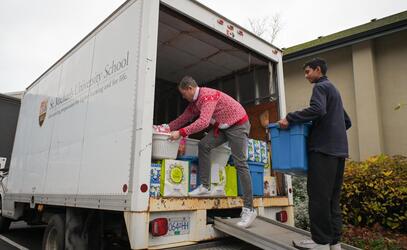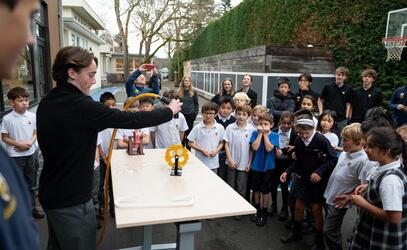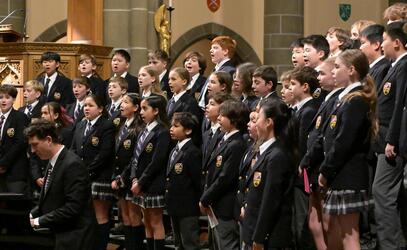Detachment is a wonderful virtue to bring into focus as its positive attributes are so often overlooked. When we think about the gifts of character, it's virtues like honesty, respect and generosity that come to mind. Why would we want to practice 'detachment’? Aren’t we trying to practice 'attachment'?
Detachment is a significant building block in maturity and self-development. It is not only noble, but it is central to our ability to be emotionally healthy and to navigate social relationships successfully. Detachment is being able to notice our feelings and thoughts, and make conscious choices to not be ruled by either. Detachment allows us to use a long lens, take in the big picture, and be more objective in our approach so that we respond instead of react!
When bad things happen, our job is not to help children avoid difficulty, but to be able to handle it well. Detachment keeps us out of trouble by helping us avoid knee-jerk reactions. With detachment, we are free to do only what we choose to do. It is using our best thinking and it allows us to be our best selves. It requires that we bring a level of consciousness to the present moment so that instead of being controlled by our feelings we can moderate and regulate them. It involves meta-cognition, or thinking about our thinking.
It’s easy to practise detachment and use good judgment when we are in the green zone. When we are upset and dis-regulated our pre-frontal cortex can prove to be elusive. That’s when we need "a space," as explained in this favourite quote of mine: “Between stimulus and response there is a space. In that space is our power to choose our response. In our response lies our growth and our freedom.”
Whether we call this space a meta-moment, a breather or even a time-out, it’s an opportunity to stand back and use the breath to bring calm so that the child can get back to the green zone and the pre-frontal cortex can do its job.
At school we encourage children to “smell the roses”: picture a rose bush in your imagination, pick three roses, each a different colour, now breathe in the fragrance of each rose, deeply, one at a time.
Once we have a calmer child, we are ready to pose questions to support their ability to detach: “What am I feeling?” (name it); “How can I manage that feeling?” (tame it); and “What are some green thoughts I can tell myself right now?” (re-frame it).
This may seem sophisticated, but even very young children are capable of using meta-cognition and practising detachment. They benefit from our modelling, coaching and providing feedback so that they know what it looks like and when they are using it – even if those moments are few and far between (“I noticed you didn’t lose your cool when your brother…”, “You have shown more maturity this week by…”). Of course there are times, when they don’t manage it, and these provide opportunities for reflection and planning, later (“What do you wish you had done?”, “If this happened again, what would you do differently?”, “If this happened to a friend, what advice would you give them?”).
Remember that what we shine the light on gets bigger.
Ask your children, what would detachment look like if…
- Your father asks you to do some chores and you are in the middle of a video game?
- You really want to join a team and it doesn’t happen?
- Someone teases you or tries to start a fight?
- Your sister takes your best sweater without asking and makes you feel really mad?
- You are feeling really upset because your best friend let you down?
Photo credit: Parachute Ball by Murdo McDermid via photopin (license)



